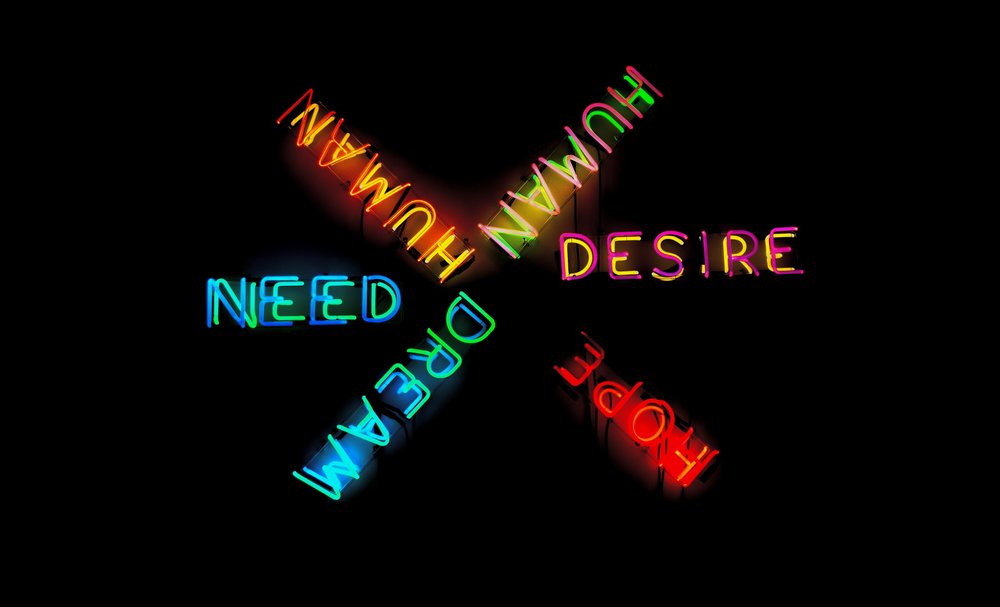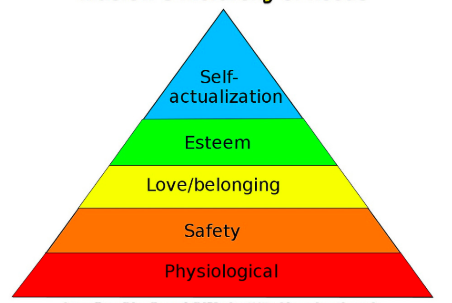REBUILD (WEEK 2)

DAY 12: SELF REFLECTION
On Day 12 of your workbook, identify your favorite sources of synthetic dopamine.
DAY 12 MICRO-SCIENCE
Maslows Hierachy of Needs

Often times we forget the very foundation that makes the rest of life possible, but lucky for us the necessary components for success are nicely outlined and easy to follow in Maslow’s Hierarchy of Needs. The trick to getting these “needs” met, however, is remembering that on a daily basis we will be tempted with hollow versions of these needs that seem like a good replacement but rarely stand up to the test of time. For instance, at the base of this foundational pyramid is our physiological needs such as food, water, air, and sleep. However, in today’s world we ingest ”food like” substances instead of nourishing our bodies with whole ingredients. To add to the instability of our pyramid we then stay up late watching Netflix and forget the rejuvenating power of sleep. Moving up the ladder to our “safety needs,” such as shelter, sex, and information: we are tempted with alternative variations of these needs that make us feel safe but are ultimately unsatisfying. Examples include porn, smartphones, or substances that feel momentarily gratifying but ultimately useless. When looking at our “love and belonging” needs people regularly substitute these innate needs with social media or hollow friendships. Overall, our natural and organic needs are being readily replaced at a rapid speed by synthetic alternatives that are poisoning our lives on a daily basis.

MASLOWS HIERARCHY OF NEEDS
- FACT: Maslow’s research stated that only 35% of people make it to the final stage of the pyramid “self actualization”, which has been known as the “optimal self” stage.
- TAKEAWAY: People struggle so much with the bottom four stages, due to circumstances or hollow distractions that they never become the best version of themselves.
DAY 12 MEDITATION
False Tagging Theory

Our brains are the ultimate self protectors and one silly little quirk the brain does is believe everything you hear on the first go. If the information sounds suspicious the brain will then tag it to then check for verification later. For instance, if someone yells “there is a bear behind you” the brain has determined it’s most prudent to believe them first and then verify if it’s false later. The brain might also apply this logic to your thoughts, first believing everything it hears and then if it takes the time to look at the evidence might later find out it’s false. This is a nasty repercussion for a brain that is pretty darn negative most of the time. This means that whatever thought comes into our head, far fetched or not, your first inclination will be to believe it. Then only if we take the time to talk back to our thoughts, might we figure out it was actually false.
- FACT: When your brain sees a potential dopamine source, it not only activates the mesolimbic (pleasure) pathway in your brain it also sends a signal to your amygdala (fear center).
- TAKEAWAY: When your brain sees something it wants it not only reminds you of the possible rewards but also throws in some fear to make sure you get both the “carrot and the stick.” The brain puts fear in there to make you believe that without those sources of dopamine you might die, making you all the more likely to pick up that piece of cake, maybe even two pieces.
DAY 12 MEDITATION
Today’s meditation is to have a a dialogue or conversation with your brain. On a piece of paper, write down the first thought that comes to mind and then answer that thought with a question. Asking questions like: What evidence do you have to support that? Where did that come from? Is that really helpful? Or really any questions of your choosing. Keep doing this for five minutes and hopefully you will get some insight into the possibility that your brain isn’t always right.
DAY 12 MOVEMENT
Natural Dopamine

As humans, our brains depend on dopamine to help us pay attention to things that may help us to survive such as bonding with close friends, exercise, and food. However, our brains don’t know the difference between synthetic dopamine (man made sources) and natural dopamine (found in natural circumstances). The brain only registers the quantity levels of the neurotransmitter. If there is a lot of dopamine released the brain is psyched and thinks it has found the sunken city of Atlantis. If there is a slow release of dopamine, like most natural dopamine sources, the brain is kinda psyched. But in comparison to today’s sources of dopamine, like pop tarts, heroin, and smartphones the brain will always want more of “the good stuff” when compared to a lower value item. That is unless you take the time to talk your brain off the ledge.
- FACT: Scientists have blocked all the dopamine receptors in a mouse’s body and put a piece of cheese once inch from their nose. However, without dopamine to motivate it the mouse ends up dying even though food is within reach.
- TAKEAWAY: Dopamine is damn powerful motivator! Don’t screw with it. Dopamine may commonly be known as a pleasure chemical, but in reality it’s a very powerful “meaning and motivator” for your mind/body system.
DAY 12 MOVEMENT
Do something today that gives you natural dopamine: Take a hike, call a friend, or read a book. Or do anything in your free time that doesn’t involve a damn screen. So close this program out and get started!
DAY 12
Bonus Material
Ted Talk: Everything You Think You Know About Addiction Is Wrong
Check out this Ted Talk by Johann Hari that will alter how you see addiction from here on out. Johann has incredible insight into the root causes of addiction and will change how you see the problem entirely.
Ted Talk: The Power of Addiction
This powerful Ted Talk by Gabor Mate, a doctor and addictions therapist, gives an inside look into why some people become addicted and others don’t.
